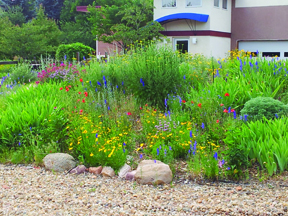Parting Waters
19 Mar 2014
The water has retreated. The basements have dried.
For many homeowners, the catastrophic flooding of September 2013 is becoming a distant memory. But chances are, your landscape hasn’t forgotten.
By Lisa Marshall “When you get nearly a year’s worth of moisture in a week, there are bound to be lingering effects,” says Thad Johnson, owner of Longmont-based garden center Yatahai Gardens. “I’m already starting to see them.” For those whose flower beds and garden plots survived, last fall’s heavy rain, unusually wet soil, potential exposure to flood-borne contaminants, and thick layers of silt and sand could pose unique challenges this spring, says Dr. James Self, Ph.D., director of the Soil, Water and Plant Testing Laboratory at Colorado State University in Fort Collins. And those who saw parts of their landscape wiped out have a unique opportunity to start fresh and create a more flood-resistant one.
Here’s a look at how things might be different in the wake of the flood, and what you might want to do as spring gets under way.
For those whose flower beds and garden plots survived, last fall’s heavy rain, unusually wet soil, potential exposure to flood-borne contaminants, and thick layers of silt and sand could pose unique challenges this spring, says Dr. James Self, Ph.D., director of the Soil, Water and Plant Testing Laboratory at Colorado State University in Fort Collins. And those who saw parts of their landscape wiped out have a unique opportunity to start fresh and create a more flood-resistant one.
Here’s a look at how things might be different in the wake of the flood, and what you might want to do as spring gets under way.












